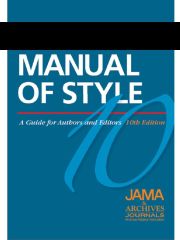“For sale: baby shoes, never worn.” This six-word story attributed to Ernest Hemingway is the subject of more contests and imitations than one can count. And there’s a reason for it. In just six words, the author manages to introduce the situation and characters, create conflict, and bring the story to its devastating conclusion. It’s this sort of economy of language that Hemingway is known for, and that many writers and editors, myself included, try to imitate.
I’m not suggesting we imitate Hemingway in only giving the reader an eighth of the story, of course. Clarity and directness are more important in scientific work than in fiction. But medical writing is dense, full of words and concepts one doesn’t always use in everyday speech (okay, maybe some physicians do). To have to wade through extra words and punctuation when already trying to concentrate on the subject at hand can be distracting, even exhausting.
Don’t get me wrong – I love words. I have an unnecessarily large Webster’s at home, though I can just as easily look up definitions online, and I will probably lug the thing from apartment to house to retirement home until my great-great-grandchildren finally use it for kindling after the Earth has run out of natural resources. But reading is not a passive activity. Our brains are working. And when there are more words than necessary, our brains must work an unnecessary amount. For the sake of the real economy, doesn’t economy of language make sense, to make readers and writers alike more productive, less taxed? If we all do our part to conserve language, we may even end up using less paper, and delaying my great-great-grandchildren’s postapocalyptic existence for a generation or two.
You want to talk more about Hemingway, you say? I’m happy to oblige.
Some say that Hemingway learned his succinct style through sending telegrams. As a reporter, he often had to get the gist of a situation across in 10 words or fewer; more than 10 would mean paying more for the telegram. He later used this as a device in his work. Jake’s telegram to Brett Ashley near the end of The Sun Also Rises tells the reader all they need to know when he goes over the ten-word limit so he can sign it, “Love.”
So what about text messages, e-mail, tweets? Some argue that these media are dulling the English language, making people lazy, unable to write in complete sentences. Maybe, maybe not. It could be that many people already couldn’t write well, and that these new media are simply putting their limitations on display. Perhaps it will prove beneficial to bring the subject out into the open.
If Hemingway became a master of brevity by sending telegrams, then why can’t we use these new modes of communication to become more effective writers? If we can no longer rely on context and nuance, we may be forced to actually say what we mean. In Jennifer Egan’s gorgeous and inventive new novel, A Visit From the Goon Squad, two characters find themselves exhausted during a conversation gone awry. The woman, Lulu, says in explanation, “…All we’ve got are metaphors, and they’re never exactly right. You can’t ever just Say. The. Thing.” She then asks, “Can I just T you?” and they continue the conversation, much more smoothly, via text message across the table from each other.
The brilliant thing is, Egan doesn’t seem to make much of a judgment about it; it’s simply the evolution of communication. Any linguistics class will teach you that language constantly evolves, and I’m happy to not be speaking Old English today, or sending telegrams for that matter. Nothing can ever replace true human connection and communication for many purposes, but perhaps through e-mails, texts, tweets, and their more sophisticated successors, language will evolve, and we will find new ways of telling each other what we really mean.—Roya Khatiblou, MA

